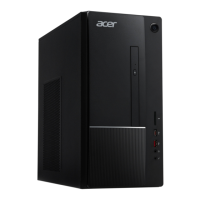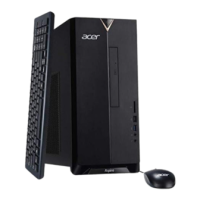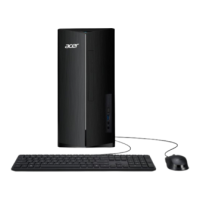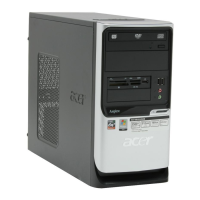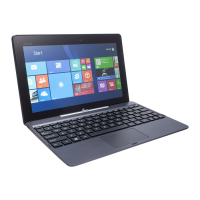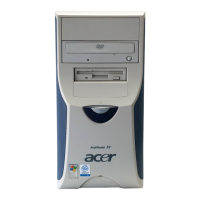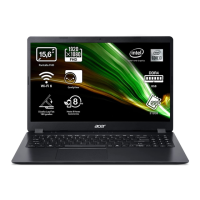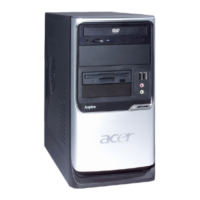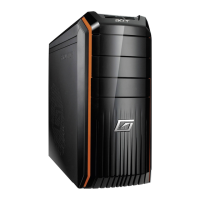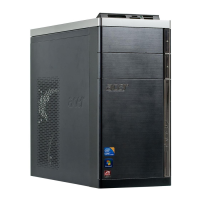Why does my Acer Aspire TC-780 say '3rd Master Hard Disk Error'?
- MMr. Stuart Walter Jr.Aug 27, 2025
This message indicates that the IDE/ATAPI device configured as Master in the 3rd IDE controller could not be properly initialized by the BIOS.
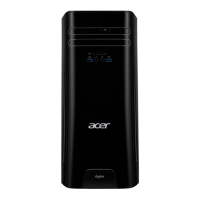
Why does my Acer Aspire TC-780 say '3rd Master Hard Disk Error'?
This message indicates that the IDE/ATAPI device configured as Master in the 3rd IDE controller could not be properly initialized by the BIOS.
Why does my Acer Desktop say 'Secondary Slave Hard Disk Error'?
This message indicates that the IDE/ATAPI device configured as Secondary Slave could not be properly initialized by the BIOS.
Why does my Acer Aspire TC-780 Desktop say 'Secondary Master Hard Disk Error'?
This message indicates that the IDE/ATAPI device configured as Secondary Master could not be properly initialized by the BIOS.
Why does my Acer Aspire TC-780 say 'Primary Slave Hard Disk Error'?
This message indicates that the IDE/ATAPI device configured as Primary Slave could not be properly initialized by the BIOS.
Why does my Acer Aspire TC-780 Desktop say 'Primary Master Hard Disk Error'?
This message indicates that the IDE/ATAPI device configured as Primary Master could not be properly initialized by the BIOS.
What to do if my Acer Aspire TC-780 says 'Reboot and select proper boot device or Insert boot media in selected boot device'?
This message indicates that the BIOS could not find a bootable device in the system, or the removable media drive does not contain media. Reboot and select a proper boot device, or insert boot media into the selected boot device.
What does S.M.A.R.T. Status BAD mean on my Acer Aspire TC-780, and what should I do?
If your S.M.A.R.T. capable hard disk sends a message indicating 'S.M.A.R.T. Status BAD', it means the hard disk has detected an imminent failure and you should back up your data and replace the disk.
What does 'Multi-Bit ECC Error' mean on my Acer Desktop?
A multiple bit corruption of memory has occurred, and the ECC memory algorithm cannot correct it. This may indicate a defective memory module.
What does '3rd Master Drive - ATAPI Incompatible' mean on my Acer Aspire TC-780 Desktop?
The IDE/ATAPI device configured as Master in the 3rd IDE controller failed an ATAPI compatibility test.
What does 'Secondary Slave Drive - ATAPI Incompatible' mean on my Acer Aspire TC-780 Desktop?
The IDE/ATAPI device configured as Secondary Slave failed an ATAPI compatibility test.
| Bus type | DMI3 |
|---|---|
| Stepping | B0 |
| Tjunction | 100 °C |
| Processor cache | 6 MB |
| Processor cores | 4 |
| Processor model | i5-7400 |
| System bus rate | 8 GT/s |
| Processor family | Intel® Core™ i5 |
| Processor series | Intel Core i5-7400 Desktop Series |
| Processor socket | LGA 1151 (Socket H4) |
| Processor codename | Kaby Lake |
| Number of QPI links | 0 |
| Processor frequency | 3 GHz |
| Processor cache type | Smart Cache |
| Processor lithography | 14 nm |
| Processor manufacturer | Intel |
| PCI Express slots version | 3.0 |
| Processor boost frequency | 3.5 GHz |
| Processor operating modes | 64-bit |
| ECC supported by processor | No |
| PCI Express configurations | 1x16, 1x8+2x4, 2x8 |
| Thermal Design Power (TDP) | 65 W |
| Number of processors installed | 1 |
| Maximum number of PCI Express lanes | 16 |
| Memory types supported by processor | DDR3L-SDRAM, DDR4-SDRAM |
| Memory voltage supported by processor | 1.35 V |
| Memory clock speeds supported by processor | 1333, 1600, 2133, 2400 MHz |
| Maximum internal memory supported by processor | 64 GB |
| Internal memory | 8 GB |
| Memory channels | Dual-channel |
| Memory clock speed | 2133 MHz |
| Internal memory type | DDR4-SDRAM |
| Maximum internal memory | 32 GB |
| HDD speed | 7200 RPM |
| HDD capacity | 1000 GB |
| SSD capacity | 128 GB |
| HDD interface | SATA III |
| SSD interface | The type of interface(s) with which the Solid State Drive is connected to other hardware. |
| Storage media | HDD+SSD |
| Optical drive type | DVD Super Multi |
| Card reader integrated | Yes |
| Total storage capacity | 1128 GB |
| Compatible memory cards | SD |
| On-board graphics card ID | 5912 |
| Discrete graphics card model | NVIDIA® GeForce® GT 730 |
| On-board graphics card model | Intel® HD Graphics 630 |
| Discrete graphics card memory | 2 GB |
| On-board graphics card OpenGL version | 4.4 |
| On-board graphics card base frequency | 350 MHz |
| On-board graphics card DirectX version | 12.0 |
| On-board graphics card dynamic frequency (max) | 1000 MHz |
| Number of displays supported (on-board graphics) | 3 |
| Wi-Fi standards | Wi-Fi 5 (802.11ac) |
| Ethernet LAN data rates | 10, 100, 1000 Mbit/s |
| USB 2.0 ports quantity | USB 2.0 ports have a data transmission speed of 480 Mbps, and are backwards compatible with USB 1.1 ports. You can connect all kinds of peripheral devices to them. |
| Chassis type | Desktop |
| Product color | Black |
| Product type | PC |
| Motherboard chipset | Intel® H110 |
| Power supply | 220 W |
| Certification | BSMI CB CCC CE FCC |
| Sustainability certificates | RoHS |
| Scalability | 1S |
| Processor code | SR32W |
| Processor ARK ID | 97147 |
| Processor package size | 37.5 x 37.5 mm |
| Supported instruction sets | AVX 2.0, SSE4.1, SSE4.2 |
| Thermal solution specification | PCG 2015C |
| Intel Identity Protection Technology version | 1.00 |
| Intel Stable Image Platform Program (SIPP) version | 0.00 |
| Depth | 425.5 mm |
|---|---|
| Width | 175 mm |
| Height | 381.4 mm |
| Weight | - g |
Details the system's core components, including CPU, memory, and I/O.
Outlines the physical dimensions, weight, and form factor of the computer.
Provides detailed technical specifications for all hardware components like CPU, memory, storage.
Guide to configuring system settings via the BIOS setup interface.
Steps to recover the system BIOS if it becomes corrupted or damaged.
Instructions for updating the system's BIOS firmware using DOS flash utility.
Step-by-step guide for taking apart the computer system for maintenance.
Step-by-step guide for putting the computer system back together after maintenance.
Procedures for diagnosing hardware issues and identifying faulty components.
Explains common POST error messages and their potential causes.
Methodology for isolating and resolving issues not covered by specific error messages.
Visual representation of the computer's core subsystems and their connections.
Identifies major components and connectors on the mainboard.
Visual breakdown of the computer showing component placement and assembly.
Comprehensive list of parts that can be replaced in the field.
List of vendors and components tested for compatibility with the system.
